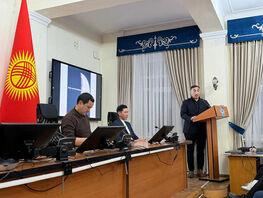More than 58 percent of children of migrants have successfully passed the Russian language proficiency test, which was held in Russian schools in October. RBC reports.
It is noted that more than 23 percent had difficulties in learning, and almost 18 percent speak the language poorly or not at all. The testing took place within the framework of monitoring the integration of foreign minors into the Russian general education system, Ksenia Gabdrakhmanova, head of the International Relations Department of the Bashkir State Pedagogical University named after Akmulla, said. She is leading a project to test a system for assessing the language and socio-cultural adaptation of foreign minors at schools.
According to Ksenia Gabdrakhmanova, this work is aimed at studying the current level of education of children of foreign citizens in the Russian Federation, including language diagnostics and adaptation programs. The monitoring was conducted on the initiative of the Ministry of Education.
According to the monitoring data, at the beginning of the 2024/2025 academic year, 154,800 foreign children underwent language diagnostics, which is 74.4 percent of the total number of migrants’ children attending Russian educational institutions of all levels.
The monitoring was conducted throughout the country. At least 100 percent of migrant children underwent diagnostics in 28 regions of the Russian Federation. In 32 regions, the share of those who took part in the testing ranged from 80 to 99.9 percent. In another 16 regions, this figure ranged from 60 to 79.9 percent, and in 12 regions — from 20 to 59.9 percent of foreign students.
Special materials were developed for diagnostics.
The tasks for first-graders have been simplified. If the 2023 test consisted of two blocks: listening and speaking, then in the new version there are only four tasks on speaking with a total duration of 20 minutes. The student is asked his or her name and place of residence, and then to say what they see in three pictures: name the animals in one, tell what the hero is doing in the second, and count the apples in the third.






